Concepting, Design (2d-3D), landscaping, hand-built


The House of Eve is a unique and sustainable low-cost building that is integrated into the natural landscape. It is entirely handmade, without the use of any machines. This was necessary to keep the cost of the building down, to just 17,000 euros.
The house is primarily a wedding and party chapel, but it is also designed to be a toolbox and a future refuge for an artist. The exterior and interior cavities of the house contain all the tools needed for farming, so the occupant does not need to enter the house to access them.
The House of Eve is a beautiful and innovative example of sustainable architecture. It is a testament to the power of human ingenuity and creativity.
Here are some specific features of the House of Eve that make it an interesting and inspiring example of architecture:
The House of Eve is a reminder that architecture can be both sustainable and affordable. It is also a reminder that the most important thing about architecture is not the materials that are used, but the creativity and ingenuity of the designer.

Situation:
Dar Hawa is situated in Beni-khalled, Tunisia. This agriculture-based city is surrounded by farms; containing oranges, grapes and wheat.
The house had to integrate into the landscape, by emphasizing the most important moments of that particular view.
The orientation and morphology of the house is linked to the course of the sun and the direction of the main winds in that particular region.

Structure:
The structure had to respond to static obstructions linked to the main wind forces and directions for that region.
A lightweight but durable structure was chosen for this design.
The house was elevated for humidity and isolation reasons.
The house had to « sit » over the ground, without asphyxiating it.


Plan:
The House has 2 plans, the floor levels contain all « dirty » activity.
The second floor is for entertainment and sleep.

Construction
The house was handmade.
Concrete has been poured and mixed by hand.
The metal had been cut with a sharp metallic edge and a hammer.
The only part that used « machines » is the transportations and the landscaping.


Upcoming work:
We still need to work on the openings and the façade mechanical ventilation system.

Design (2d-3D), landscaping, renderings, Execution plans

House Stein was made for a client wanting a family house on top of a hill in tunisia.
The house had to contain 2 modules working as studios for both their children.

Situation:
Dar Stein is situated in Ghardeya, Tunisia. This hill village is surrounded by farms; containing Olive trees and wheat cultures.
The house had to integrate into the landscape, by emphasizing the most important moments of that particular view.
The orientation of the house is linked to the slope and the views.

Plan:
The House has 2 plans, the floor levels contain all « dirty » activity.
The second floor is for entertainment and sleep.


Sections
The clients wanted to integrate many programs in a narrow space.
Concept, Design (2d-3D), landscaping, renderings
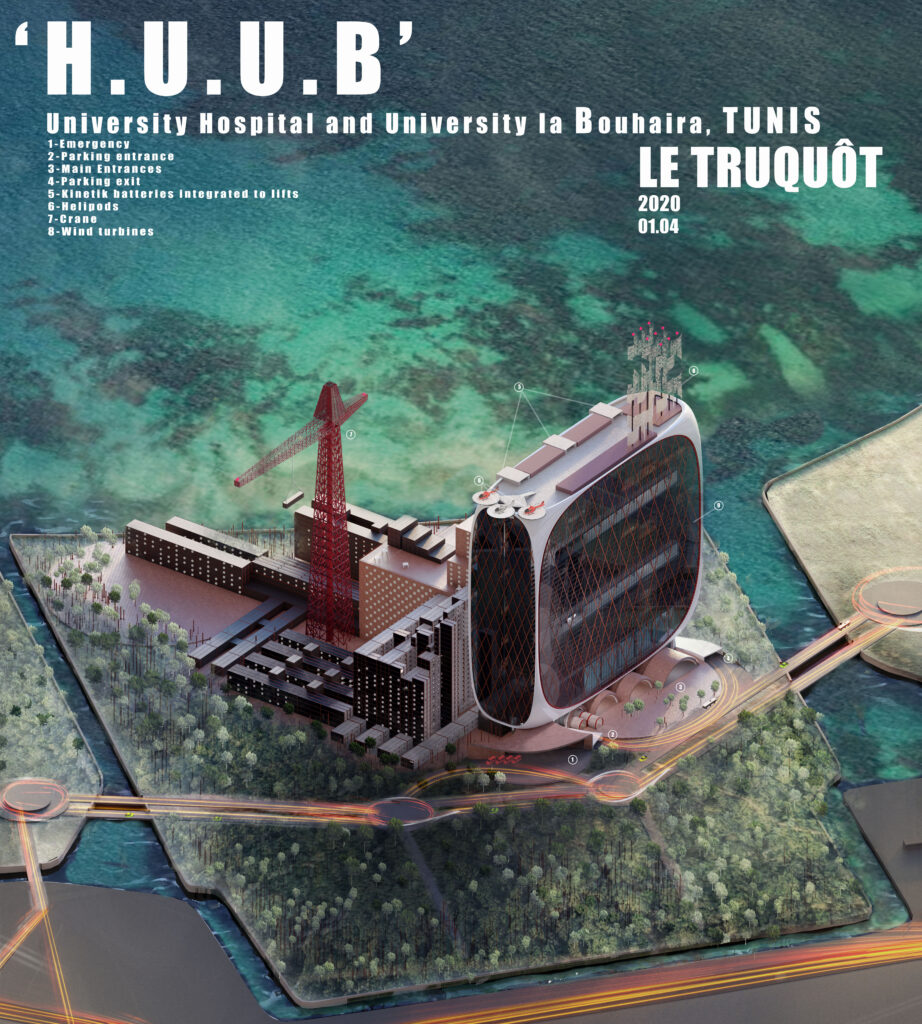
The nucleus of the project is a central hub that can be expanded with new modules, like veins, to create specific sectors that meet the needs of the population.
H.U.U.B would be one of the first medical complexes in Africa to bring together scientists, students, researchers, and doctors. This would accelerate the development of needed medicines and provide optimal space for research, technology, and advances in African healthcare.
The proximity of the location to Europe and its central position in Africa would make it a gateway to the continent.
In other words, the project is to build a modular medical complex in Africa that can be expanded to meet the needs of the population. The complex would bring together scientists, students, researchers, and doctors to accelerate the development of needed medicines and provide optimal space for research, technology, and advances in African healthcare. The location of the complex is ideal, as it is close to Europe and central to Africa, making it a gateway to the continent.

Situation:
H.U.U.B would be situated in the heart of the city, connecting the lake to it’s urban weaving.
The proximity to the lake would permit the extension brought by ship

This project is a response to the urgent and fundamental needs of the Tunisian public hospital system, which were exacerbated by the COVID-19 pandemic.
The hospital is designed to be a central hub, like a heart, that is fixed and waterproof, but can also expand and adapt to needs by adding new modules. This makes it ideal for accommodating quarantined areas and creating watertight and independent care paths. The hospital also uses a sustainable energy policy and a connected and self-managed efficient system powered by artificial intelligence.
H.U.U.B includes a separate emergency service, a university with departments in IT, biology, chemistry, physics, pharmacy, healthcare, and medicine, a public university hospital, and research laboratories.
In other words, the project is to build a modular hospital in Tunisia that can be expanded to meet the needs of the population. The hospital will be equipped with the latest technology and will use sustainable energy practices. It will also include a university and research laboratories, making it a center of innovation and excellence in healthcare.
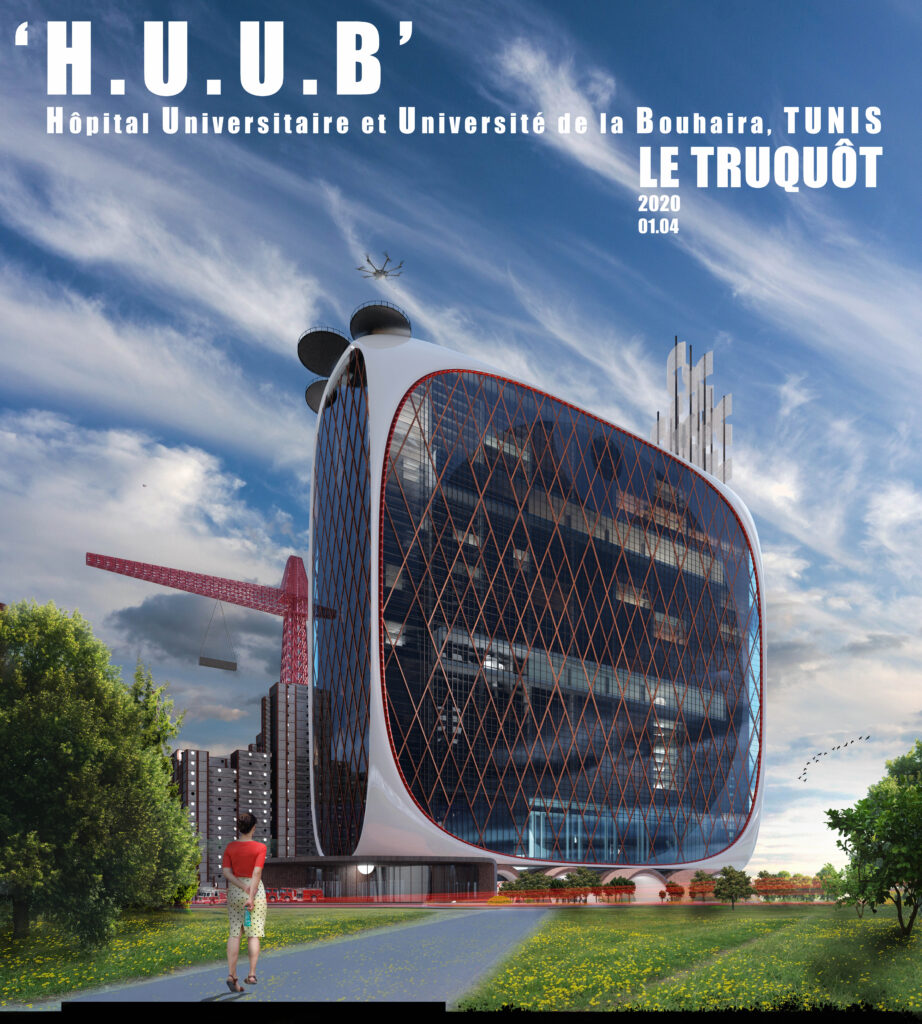
Concept, Design (2d-3D), landscaping, renderings
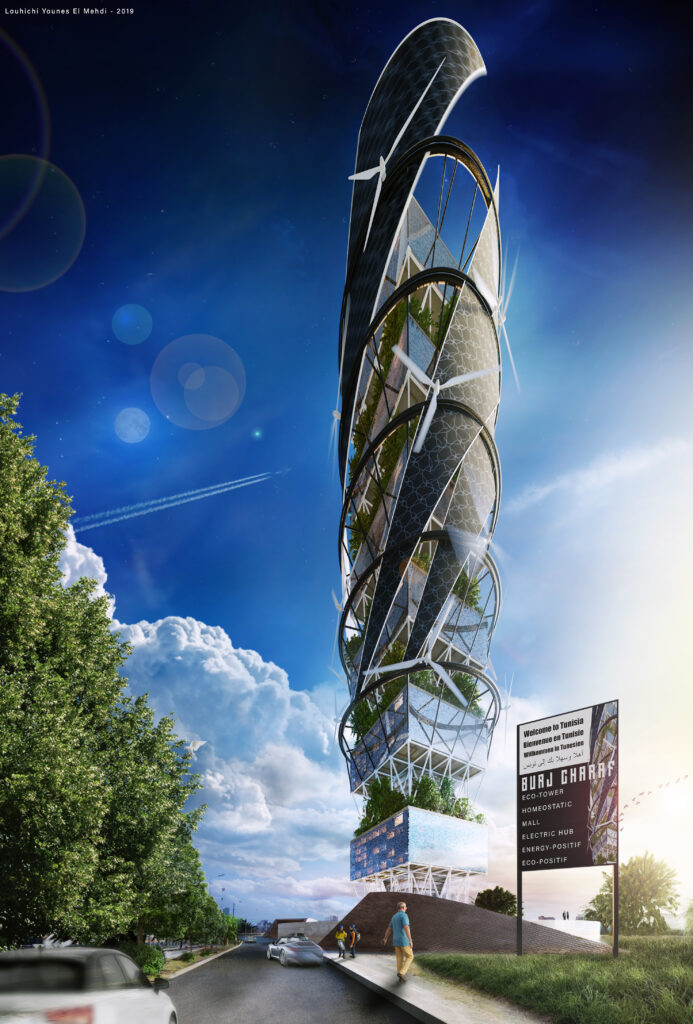

Situation:
H.U.U.B would be situated in the heart of the city, connecting the lake to it’s urban weaving.
The proximity to the lake would permit the extension brought by ship


Situation:
It is situated near the city center on a thin road throw the lake, connecting the arrival of foreign car travelers directly to the center of tunis.

Burj Charaf is a proposed skyscraper in Tunis, Tunisia, that would be designed to be self-sufficient and environmentally friendly.
The building would have an underground parking garage with electric charging stations, and commercial spaces on the ground floor.
The upper levels of the building would be divided into modules, with each module having a different purpose. One module would be used for farming, with four levels of crop landscape and several levels of animal farming landscapes. The farming module would be designed to be open and airy, with the animals kept in a seemingly open landscape. The glass facade of the module would change opacity to provide the animals with the best possible conditions.
Another module would be used for housing, with a grassy volume on top. The remaining modules would be used for commercial renting and high-end housing. The roof of the building would be accessible to the public and would have restaurants and diving areas with views of Tunis.
The building would be designed to be energy positive and financially independent. It would use clean energy sources, such as solar and wind power, and it would recycle its own water and waste. The building would also be designed to clean the air and water around it.
The name of the building, Burj Charaf, means « honor » or « honorable » in Arabic, and it reflects the philanthropic concept of the project. The building is designed to be a model of sustainability and environmental responsibility.
Viability:
Whether or not Burj Charaf would be a financially viable project is difficult to say without more information. The cost of construction would be high, but the building would generate revenue from the commercial spaces, housing, and energy sales. The building’s ecological impact would also be a major selling point, especially in a city like Tunis, which is facing significant environmental challenges.
Homeostasis:
Burj Charaf is described as being homeostatic, which means that it would be able to maintain a stable internal environment, even in the face of external changes. This is a key goal of sustainable design, and it is something that Burj Charaf would achieve through its use of renewable energy, water recycling, and waste management systems.
Overall, Burj Charaf is an ambitious and innovative project that has the potential to be a model of sustainability and environmental responsibility. However, more information is needed to assess its financial viability.



Homeostatic:
This tower adapts to its surroundings by maintaining a stable internal environment, even when the external environment changes. It has moving structures and wings, a growable height, and high-end technologies.
Purpose:
Burj Charaf has four main purposes:
The proximity of Burj Charaf to the lake gives it the responsibility to start cleaning its water and to create a stable ecosystem that interacts with the tower. It contains multiple « attachable » and maintainable modules that produce energy. These modules were chosen to be small so that they can be easily adopted by neighbors who want to take a step towards independent and ecological energy cycles and production.
Burj Charaf produces various forms of energy, including:
Animal and plant farming: A « pseudopatent » floor of vertically moving platforms harvests the weight displacement of cows and other animals to generate electricity. Four connected floors would contain vegetables, fruits, and crops coexisting efficiently with the animals in a « boxed » landscape inspired by English gardens.
Solar
Geothermal
Wind: Wind turbines and the structure itself generate electricity. A « pseudopatent » module in the angles of the structure harvests the horizontal displacement of the building to generate electricity.
Clean:
Burj Charaf cleans the surrounding polluted rural air and transforms the water of the lake into drinking water. The bottle of water would be called « Guilta, » which means « pond » or « laying undrinkable water » in Tunisian dialect. This is a reference to the history of the Tunis lake and a joke that the cleanest bottle of water in the country is called « POND. »
Burj Charaf influences the surrounding neighbors to use self-efficient, biomechanical, and mechanical energy systems. It also sells cheap electricity to the surrounding area to push the government towards ecological energy investment.
Overall:
Burj Charaf is a proposed skyscraper in Tunis, Tunisia, that would be designed to be self-sufficient and environmentally friendly. It would use renewable energy sources, clean the surrounding air and water, and produce food. The building would also be designed to be adaptable to its surroundings.
Concept, Design (2d-3D), landscaping, renderings

This is a Farm house. Dar Ghorbel is a house inspired by major artists of the 20th century, including Mondrian and Kandinsky.
The House is a cylindrical volume seperated into 2 levels and a mezzanine.
The whole structure is holding on a half-submerged socle.


Concept, Design (2d-3D), landscaping, renderings

This is a Farm house. Dar Khazaan is a house inspired by major architect of the 20-21st century, including Le corbusier and Mies van der Rohe.
The House is a rectangular volume seperated into 2 levels and a usable roof
The whole structure is holding on pillars.


COMPETITION: Concept, Design (2d-3D), landscaping, renderings

« THE GIFT » is the name of this proposal for the xxxxx 2022 competition, which is held on an architecture of the essentials in hot climates. This cube in the shape of a gift measures 2m50x2m50 with a height of 2m85.
This minimalist form allows for increased sobriety and compliance with road regulations. Indeed, the present is an object that can be transported easily on the roads and deposited in natural environments without damaging them. Once placed, the present can be unpacked to provide a humble 14m2 tinyhouse that acts as a toolbox for any dedicated camper.
This present tries to provide all the needs of a nature lover, without requiring him to have technical knowledge in construction. The shelter is ready to use as soon as it leaves the factory and opens with simple gestures. Like a gift, the gift can be transported, offered and unpacked to reveal its warm interior.
The project totals an area of 14m2. It has a functional kitchenette, supplied with electricity. It features a comfortable but minimalist cocoon to sleep in, a dining room, a terrace, a storage room, a refrigerator, an outhouse, a shower, solar panels, and even a wind turbine that comes to express the « brand » of the project. It is important to specify that during the transport of the project, this brand image is visible and makes this compendium of ecological tools viral. The shelter shows a materiality of oak wood with a reflective clarity.
This allows integration without opposition to any natural environment, ranging from the forest to the desert. The clarity of the wood makes it possible to have a high direct light reflection index. Thus the transfer of heat by radiation is reduced. The frame is made of metal for added structural security. To prevent the latter from stretching and shrinking, a layer of wood wool insulation is applied as external insulation. This layer is protected internally and externally by a moisture seal.
Concept, Design (2d-3D), landscaping, renderings

This is a conceptual building replacing an existing building in the center of Geneva.
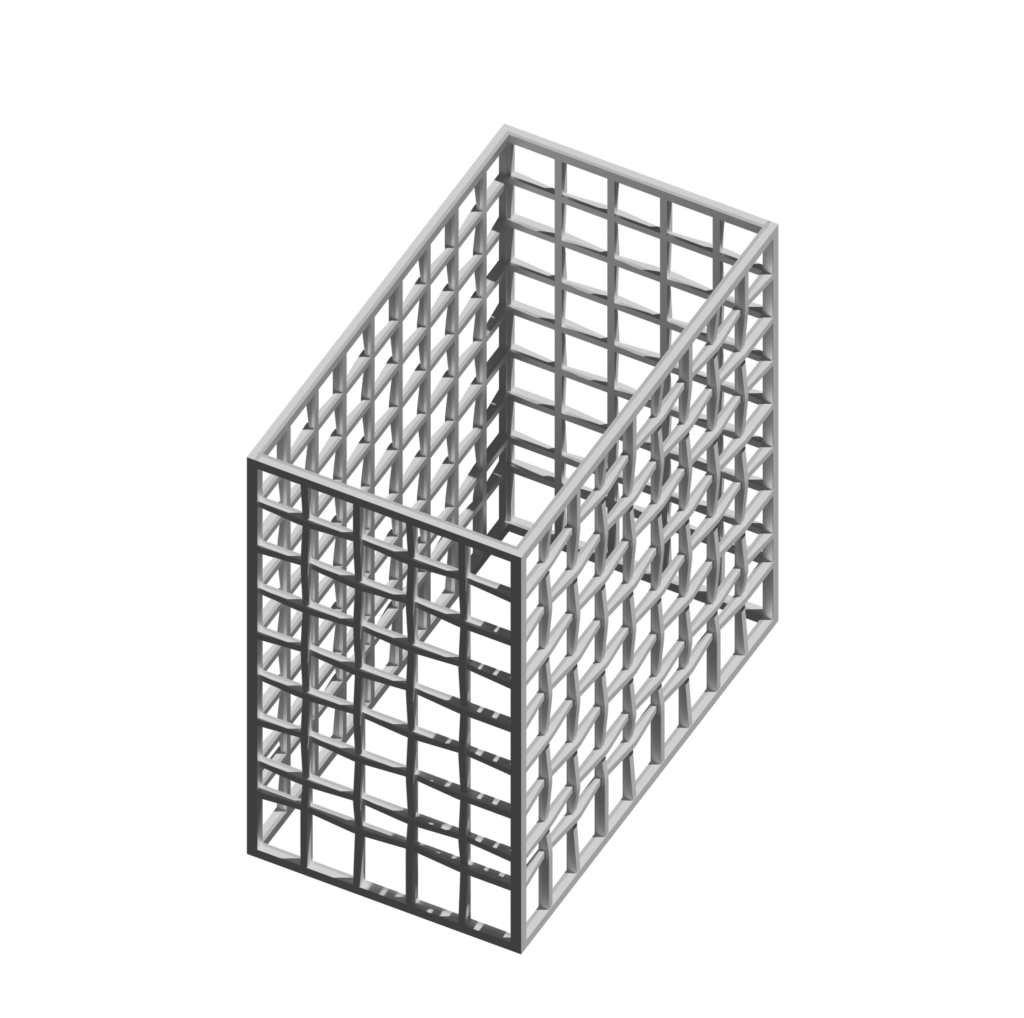
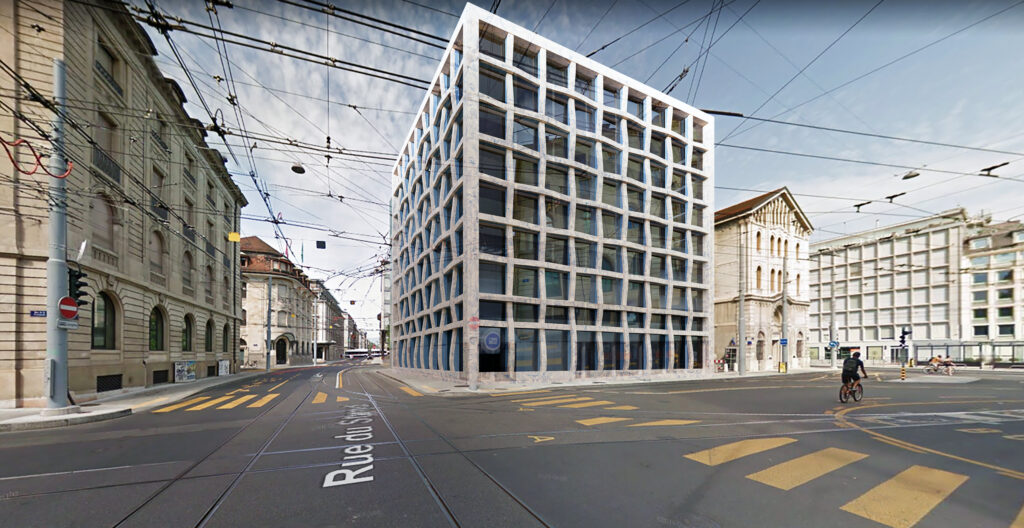
Concept, Design (2d-3D), renderings, animations

This is a conceptual 3d printable, modular and parametric cast.



Concept, Design (2d-3D), renderings, animations

SUPER TENEMENT is a modular and adaptive system programmed on grasshopper. Structure, façade, construction elements are all generated in a modular way. The building allows change over time. It’s updatable, repairable. This theoretical approach tries to imagine a Shelter as a computer with interchangeable components. (References project ARA and Phoneblocks. Super tenement borrows its name frmo 3 protagonists of the « after 2nd world war » architecture scene; superstudio, archigram and archizoom. These italian theorecists imagined structure and cities around consumerism, automation and the futur. Sadly, we sometimes forget the importance of modularity, adaptivity and automation in architecture’s transition to ecological behaviour. This project tries to reminisce these forgotten concepts while honestly displaying the necessary machinery every building hides nowadays.


Design (2d-3D), Parametric Design, construction

The Bonati Bivouac (bivouatti) is a shelter for the A Neuve’s glacier. The A Neuve’s hut is a refuge at 2735m altitude that needs an extension of it’s dormitories.
The construction needed to be demountable and re-mountable due to the sites altitude.
The design process was made on grasshopper, this made it’s conception modular and adaptable to changing timber dimensions.
it also permitted to produce the blueprint of the wood cuttings.
The wood construction system is related to vernacular swiss construction (Raccard) and allows, with a better insulation, to have the right shelter on these heights.
This structure was constructed by 20 EPFL students from the studio EAST. The whole construction was made without any machine. We used Japanese saws and wood chisels. No metal, no screws and no nails. Everything is made in wood (exception made for the Hamac)
For this structure we used a parametric software (grasshopper) to readapt the choices of form, general mensurations and wood plank mensuration to our project’s evolution.
The conception phase was made in 3 weeks, construction in 10days.
There were no carpenters in our team, only architecture students.
The project tries to relate to vernacular swiss construction and to express the perilous aspects of the A Neuve’s site.
It also relates to Semper, a theoretical architect who had a fond feeling to the importance of the envelope in the « original huts ». Here we tried to make a hut, only made by structure, where envelope becomes a structural object. The interesting aspect of the « joints » show’s that structure and ornement can sometimes be in-dissociable.
This was our first construction. (1 to 1)
Team:
Kimberley BERNEY, SoukaïNa RICHARD, Enrico CHIZZOLINI, Darine DANDAN, Aude FAURE, Emilien DUCOMMUN, Vincent BIANCHI, Omar IMADIOUNI, Younes LOUHICHI, Salla SIVUNEN, Quentin HUEGI, Marta DE BENITO, Arnaud MIGUET, Daniela LOPES, Maseeh TAKHTRAVANCHI, Samuel JACCARD, Pénélope ESCALLIER, Mathieu VIENNET, Noel RYDENVALD, Raphael DELMUÈ, Laurent SOULIER
Articles:
24 heures http://bit.ly/2CM5vu6
Tribune de Genève http://bit.ly/2Dfj6uL
Le Nouvelliste http://bit.ly/2kOsCNh
Camping des Glaciers www.camping-glaciers.ch
EAST 2017



Design (2d-3D), Parametric Design, model construction
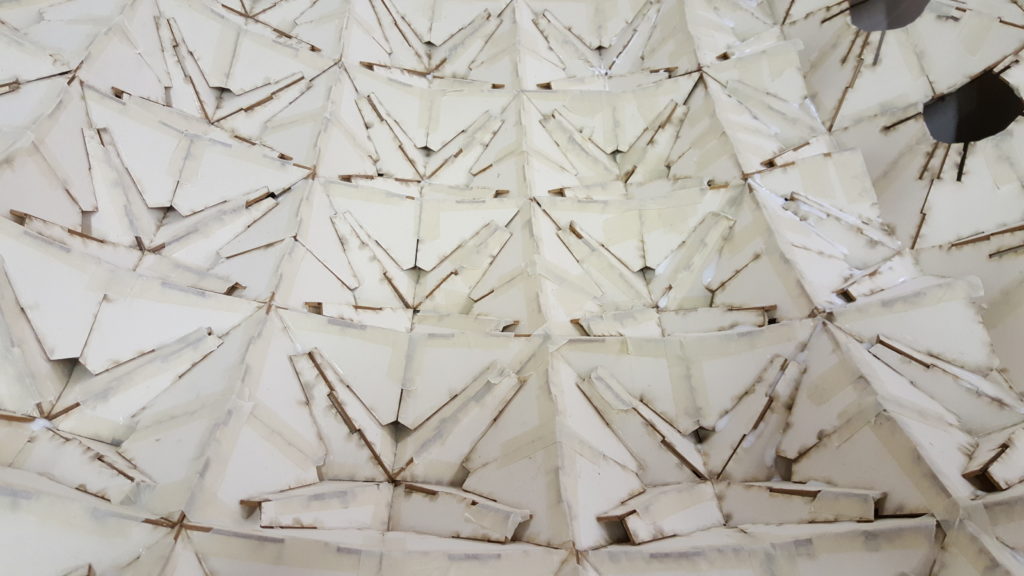
A parametric wood structure made in only wood.
In this project, I did the design process of the parametric structure with grasshopper, following a double curvature surface. like the Jean Nouvel’s dome in the Louvre in Abu Dhabi
Group members: Eric Nardini, Omar Imadiouni, Vianney Huart, Souheil Alami, Adrien Blondel-Chavez, Louhichi Younes
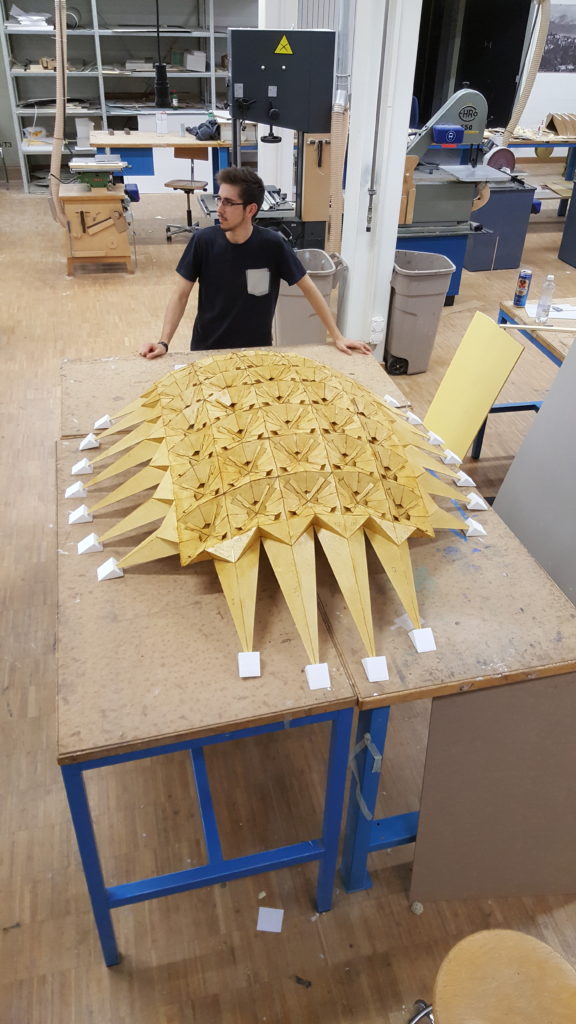
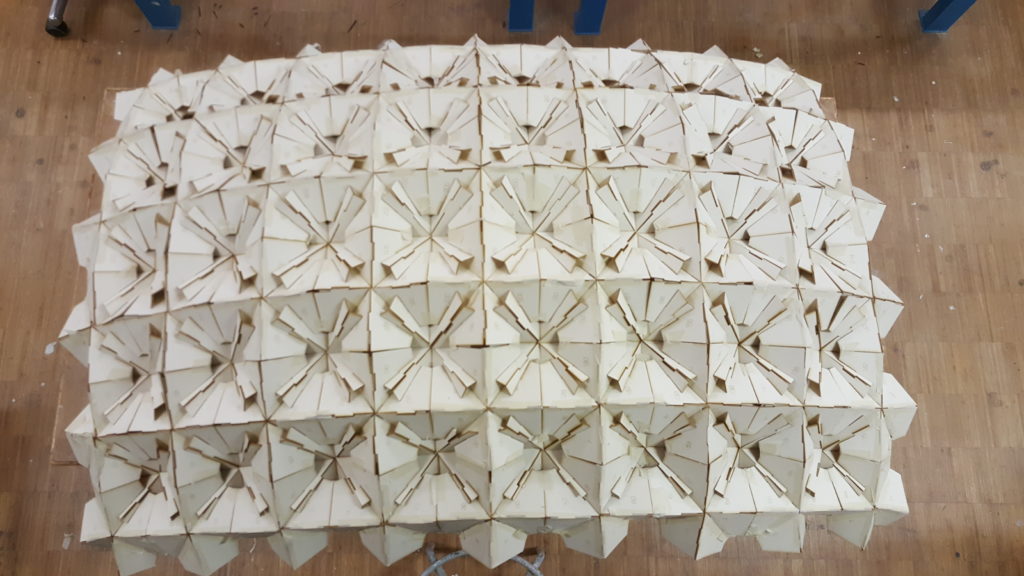
Design (2d-3D), Parametric Design, model construction

Is a Gateway to Geneva.
Group members: Marigona Kolgeci, Louhichi Younes
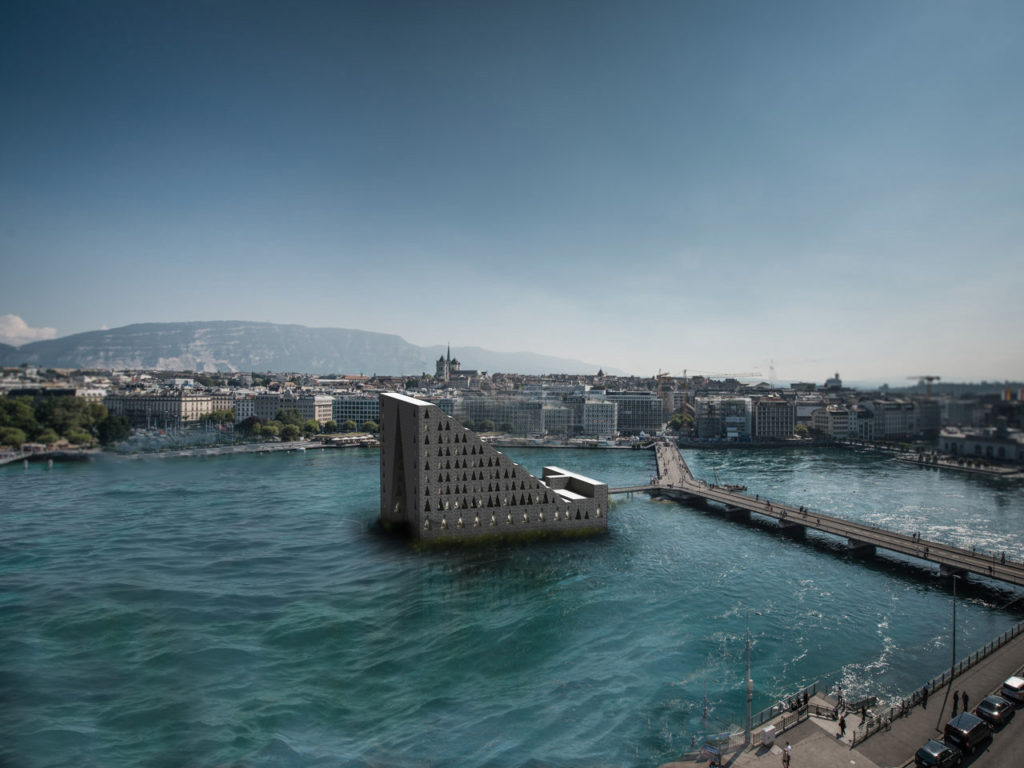

Art, Architecture, Language and programming